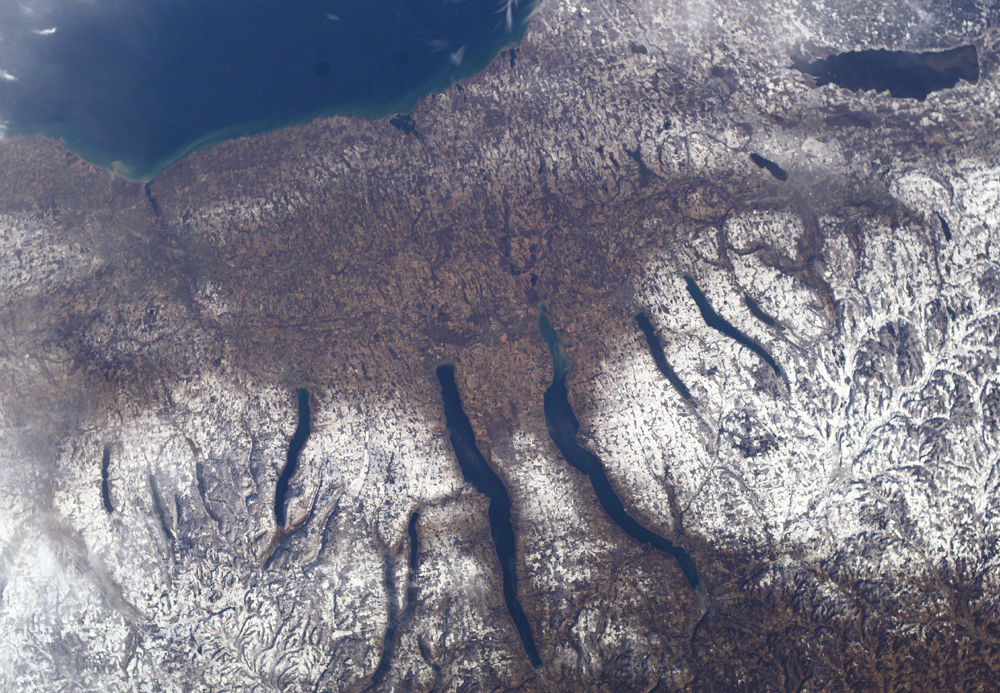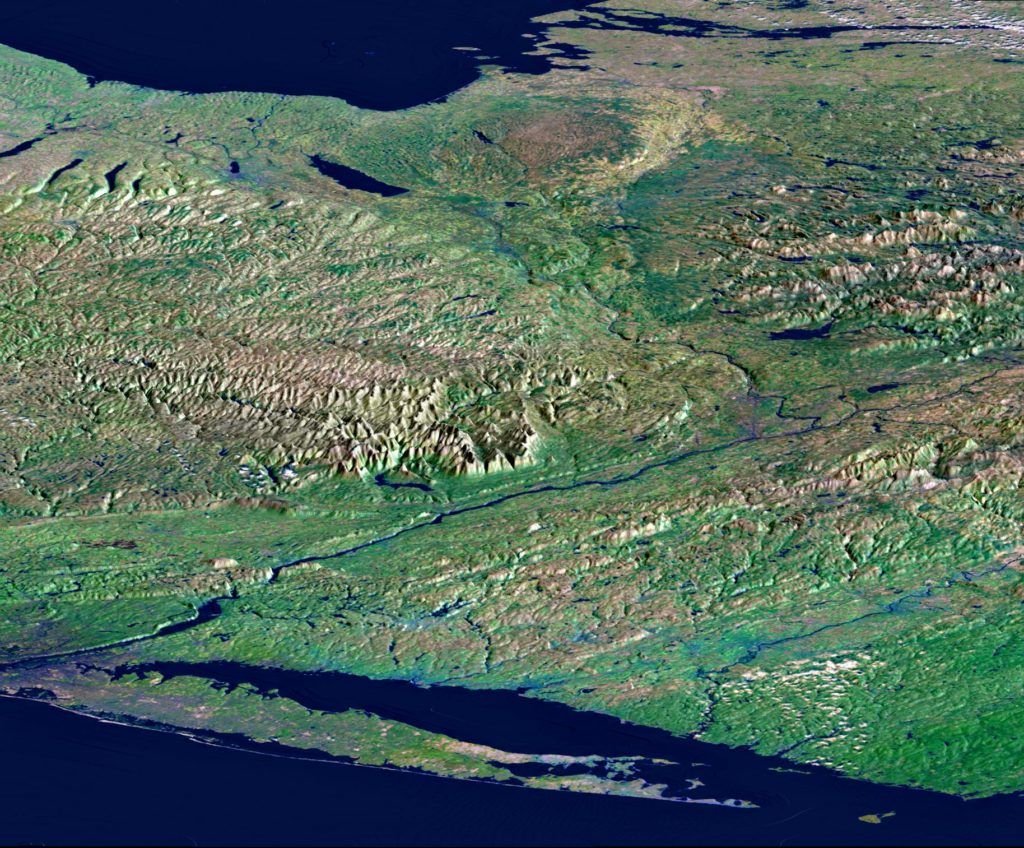The Pleistocene
Fast forward to 2.6 million years ago and in the Pleistocene Epoch glaciers carried along vast amounts of sands, soils, gravel, and boulders leaving deposits up to 300 meters thick in some valleys. This left the Catskill region low and flat, and hollowed existing trenches as mammoth ice sheets repeatedly advanced across New York State. The towering ice widened and expanded former river valleys to make the Finger Lake troughs. Some of the finger lakes were pushed down so deeply by these glaciers that their earlier bedrock floors lie below sea level.

“All the streams in the Bronx run from north to south, reflecting grooves in the land left by the retreating glaciers of the last ice age. Individual ponds and lakes are the products of ice blocks that detached from the glaciers.”
Sergey Kadinsky in Hidden Waters of New York City, p. 62.

“In terms of its geomorphology—that is, the shape of the Earth’s surface—the land beneath the Ashokan Reservoir suggests itself as a proper place for a lake of sorts. Although not volcanic in nature, the Ashokan Reservoir occupies a spot prepared for it by glaciers that arrived from further north a few million years ago. Glaciers ground and gouged the land. They pushed up piles of rock debris. One pile of rock debris—called a moraine—plugged a bowl-shaped space carved by a glacier, and a vast glacial lake accumulated behind it. Really Ashokan is a perfect place to put a reservoir because, as geology tells us, one was there once before.”
Jill Schneiderman in The Earth Around Us: Maintaining A Livable Planet, p 174.


